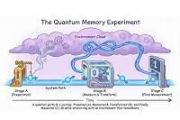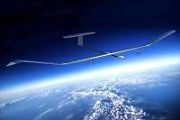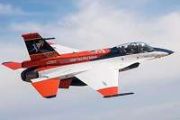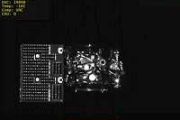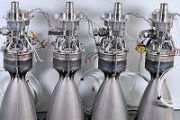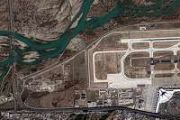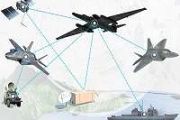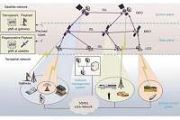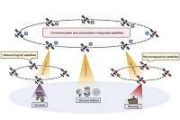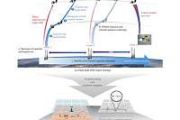“Concurrent Design – Faster and better multidisciplinary design”
The Concurrent Design approach offered by J‑CDS (www.j-cds.nl) gives support to multidisciplinary teams to successfully perform Concurrent Design in cooperation with and participation of the customer. It provides all the required integrated design and modelling capabilities to support the multidisciplinary team in their collaborative work, allowing them to come up with a solution for the customer, taking into account the full life cycle perspective of the system, based on a proven methodology.
Concurrent Design definition
Concurrent Design is a systematic approach to integrated product design that emphasises the response to customer expectations and the combination of creativity and engineering. It embodies team values of cooperation, trust and sharing, in such a manner that decision making is by consensus, involving all perspectives in parallel, from the beginning of the project life-cycle.
Concurrent Design focuses mainly on the early phases of a project or product, such as preliminary design and feasibility studies. The central concept of Concurrent Design is the use of collocated sessions during which the team works together to share and discuss all aspects of a design in a structured way, usually in the presence of the customer who provides feedback on the main trade-off decisions. The multidisciplinary team evaluates and engineers the product/project systems and subsystems at the same time, using one common reference model.
Concurrent Design translates multidisciplinary design meetings in concrete values supported by experts representing all perspectives of the product/system lifecycle. The outcome of a Concurrent Design session provides management with a very good and complete view of the system/product, thus facilitating their decision-making processes.
The process
The Concurrent Design approach puts experts of all perspectives of the product lifecycle together with the problem owner (often the financer of the product or the end user) in a room for a limited duration, with clear goals to reach (e.g. answers to feasibility questions) and with the possibility to interact with the customer to correctly interpret or even modify the input requirements.
Communication on design between experts is mainly performed by the exchange of parameters instead of documents. From those parameters, a data model (product tree) is built for all design solution alternatives. The use of a data model as a communications means between experts imposes that the level of detail in the design remains consistent across all specialist disciplines, and ensures that all experts speak the same language.
The time in which the Concurrent Design study is performed is of great importance for the design. Only limited time is given for the design in order to make the team focus on the important issues. Seasoned users of the Concurrent Design approach have usually developed their own tailored process scripts which guide the team through the study. Typically, two to three Concurrent Design half-day sessions per week are held, leaving time for team members to return to their desk and work on details in between sessions.
The tools and infrastructure
Experts during the Concurrent Design sessions use the specialist software tools that they are already familiar with. Therefore the learning curve in terms of tools is very low for the team members. Design parameters from each specialist tool are extracted using the Concurrent Design platform, which builds the complete product tree or data model. The Concurrent Design infrastructure provides a back-up and archiving capability, access to domain-specific repositories and databases, remote login capability, data security and protection.
The Concurrent Design work room is typically organised in a semi-circular concentric ring pattern, with specialists team members occupying the outside ring, and system-level engineers, process coordinators and customer representatives placed in the central ring. Each desk is equipped with standard computing facilities, installed with the necessary design software used by each expert, and with the Concurrent Design platform software that extracts design parameters from each expert domain and interfaces with a central repository where the integrated data model is built. Other facilities include presentation screens, microphones, videoconferencing cameras, and external communication facilities.
The design model
The data model and product tree are built up from the exchange of parameters via the interfaces between the different experts and their tools. It creates a software-based model referred to as the integrated design model. Building a representative, adequate design model is at the core of successful Concurrent Design. The parameters included in the design model must be complete and representative, the relationship between the parameters must be established quantitatively, the level of detail in parameters from different specialist disciplines must be consistent and must allow supporting the objective of the Concurrent Design session.
The team
The Concurrent Design team consists not only of technical sub-system specialists but also experts in cost engineering, risk assessment, planning, and marketing. The full team also includes a Concurrent Design process manager or facilitator and a system engineer (often the project manager or the person with the overall, often ‘technical’, view of the product). Although variable depending on the study, a typical team size is usually in the range of 7 to 20 members.
Benefits of Concurrent Design
Benefits for Industry
A number of significant benefits emerge when Concurrent Design is used during the early design phases of multidisciplinary projects:
- Shorter design time and time-to-market: current users of Concurrent Design have acknowledged that it shortens the time required to complete feasibility studies and early design assessments compared to classic sequential or centralised methods. This allows increased profitability and competitiveness, since more alternatives can be considered in a given timeframe, with a consistent level of details allowing trade-off analyses. In that sense, Concurrent Design is an enabler of innovation within an organisation.
- Overall risk reduction methodology applied to complex design projects: by providing a more complete idea, early in the design, of the feasibility of a product/system with respect to technical characteristics, cost, schedule and risk levels, Concurrent Design supports management in making the best decisions concerning a design direction or even regarding whether or not to proceed further with a project.
- Potential reduction in the number of late design changes: it is well acknowledged that decisions made during the early stages of a project are dimensioning for the project end cost, schedule, quality and product marketability. Concurrent Design offers the advantage of limiting the introduction of design changes late in the development cycle, thus reducing cost and risk.
- Better evaluation of the impact of changes on all project/product aspects including cost, schedule, quality, risks: project teams using Concurrent Design are more reactive and receptive to change proposals because they have the tools and processes to make change impact assessments.
- Optimisation of project/product quality and higher client satisfaction: in cases where the Concurrent Design methodology involves the customer (most cases today), the achieved level of satisfaction from the customer is generally higher and quality (defined as the extent to which the product meets its requirements) is improved.
- Benefits for team dynamics: by promoting team member involvement and interaction between team members, Concurrent Design improves creative and innovative thinking, as well as project ownership by the team.
- Positive corporate benefits: the widespread use of Concurrent Design within an organisation fosters global corporate knowledge in the design models and potential reuse. It also provides the possibility to standardise the design and development approach within an organisation.
Benefits from the customer point of view, including government organisations
Most of the advantages of Concurrent Design listed above also apply to customer organisations. Additional benefits are:
- Possibility to elaborate requirements during a tendering process: customers may use Concurrent Design to define and/or refine their needs and requirements prior to issuing Invitations To Tender, or Requests for Proposal/Quotation. In some cases, Concurrent Design may also be used to evaluate supplier proposals more objectively and quantitatively. It offers the possibility to streamline the end-to-end tendering process and can lead to significant schedule compression for that process.
- Improved project oversight during development: Concurrent Design offers the possibility to conduct a more thorough review process during design gate reviews: the evaluation of the supplier’s proposed design and its adequacy to meet customer’s objectives can be quantified by using Concurrent Design;
- Generally, both from customer and supplier viewpoints, Concurrent Design allows a faster convergence of mutual understanding.
Benefits for Academia
Some academic organisations use Concurrent Design facilities as an integral part of their teaching portfolio, in the form of group design projects, hands-on tutorials, or research projects. Concurrent Design facilities are typically used in degrees including subjects in aerospace engineering, systems engineering, integrated product development, multidisciplinary design and optimisation, or engineering management.
A research organisation with a solid experience in Concurrent Design is likely to attract industrial funding from companies having neither the in-house human/time resources nor the necessary infrastructure and experience to conduct a Concurrent Design process. It creates a win-win situation for both industry and academia.
Global economic and societal benefits
Ranging from local to global, application of Concurrent Design in a dedicated facility (or collection of facilities), a Concurrent Design Centre of Excellence (CDCE), will bring the following benefits:
- Promotion and maintenance of the facility: the CDCE itself will require a support team in order to promote the Concurrent Design approach, to manage the facility, to support the users and to maintain the infrastructure. Initially, we estimate that such a team will consist of 2 to 3 persons, but experience shows that it can grow up to 15 persons when demand is high. This in itself will generate economic activity.
- New business interactions and cooperation: Concurrent Design is inherently a multidisciplinary approach requiring experts from varied disciplines covering engineering, marketing, management and financial aspects. Often, organisations do not have in-house all the expertise required, and therefore need to acquire it from external companies.
- Creation of a knowledge rich environment with potential spin-off developments and start-up businesses: a state of the art centre such as the CDCE attracts innovative companies and can be a trigger for them to relocate in order to be closer to a facility that, by definition, promotes multidisciplinary cooperation with clear benefits.
- Stimulation of a knowledge society: the CDCE can trigger new relationships within the science and technology communities, fostering innovation and creative thinking and potentially translating into new business ventures.
Concurrent Design use cases
The CDP™ contains the principles of Concurrent Design as an integral part of the tool to reach these objectives.
There have been many varied uses of Concurrent Design over the last decades. The few examples below illustrate the breadth of utilization of the approach:
- Space systems design: the space agencies of the USA and Europe (NASA/JPL and ESA) have been the precursors of the use of Concurrent Design in large-scale, multidisciplinary design projects in the 1990s. It is not surprising, therefore, that several hundreds of preliminary design studies and design reviews on satellite systems have been conducted using Concurrent Design. The spacecraft subsystem specialists interact with each other and with cost, programme, schedule and risk experts, leading to complete design concepts and proposals, handed over to management for further decisions on implementation.
- Offshore / maritime: Recently, design options for an upgrade to an Arctic Trencher System were evaluated for a customer in The Netherlands, providing equipment to dredging operators, oil and gas corporations, and offshore contractors. Concurrent Design sessions were held with a team of 12 experts in systems engineering, soil mechanics, trenching, electrical systems, shipbuilding, cost estimation, and offshore operations, for the design of an innovative trencher system with the objective to push back limitations from current equipment (e.g. trench depth) while maintaining the needed production speed.
- Construction industry: Concurrent Design has been used successfully in civil engineering projects for the design of innovative building solutions balancing competing constraints stemming from budgetary, environmental, and sustainability requirements. It was demonstrated how to develop and establish a model-based and collaborative way of working in the early design phase, considering the complete life-cycle of a building.
- System of systems: in generic terms, the pooling of capabilities offered by individual systems to create larger systems with integrated benefits and additional performance or services is termed “system of systems”. The Concurrent Design methodology has an enormous potential to support the processes involved in system of systems integration because it offers the structure and the tools designed for the combination of individual domains. The use of Concurrent Design for system of systems has been demonstrated in Europe in a project with the European Defence Agency (development of a simulation tool to assess the value of Intelligence, Surveillance & Reconnaissance capabilities in support of Common Security and Defence Policy operations). System of systems engineering is of major interest to national Defence Departments in North America and Europe.
- Other examples of successful Concurrent Design projects have been conducted by RHEA and J‑CDS in the maritime sector, agriculture, and electronics engineering.
Typical end-to-end Concurrent Design activity
The typical lifecycle of a Concurrent Design activity flows according to the following logic.
- Preparation phase: in this phase, the customer requirements and expected outcome of the Concurrent Design activity are elaborated. The expertise required to conduct the Concurrent Design process can then be defined and the team is built. The parameters of the integrated data model are defined, which allows interfaces between the distinct expert domains to be included in the model. The tools and infrastructure are configured. Concurrent Design sessions are planned and the team is being trained and briefed. The length of this phase depends on the size of the project, but an order of magnitude is between 2 to 4 weeks. The main actors in this phase are the customer, the project manager, the Concurrent Design process coordinator, and some of the technical leads on the project.
- Concurrent sessions phase: here the actual Concurrent Design process takes place. Half-day or full-day sessions are conducted, at the rate of 2 to 4 per week, leaving enough time between sessions for experts to conduct the detailed work at their own desktops and for dedicated meetings to take place between experts if needed. Depending on complexity and progress, the length of this phase typically ranges between 4 and 6 weeks. This phase involves all actors of the Concurrent Design process, i.e. those listed above for the preparation phase, plus the domain experts, and the facility administrators.
- Consolidation and reporting phase: minutes of sessions, material from experts, and synthetic analysis material is gathered to form the study report. Summaries and recommendations to management are presented. Lessons learned from the Concurrent Design process are another important part of the final report material. This phase can take between 1 and 2 weeks. At this stage, the final report is generally drafted by the project manager supported by the domain experts.
Contact
For more information about J-CDS and/or about this product please contact us via arne.matthyssenADDj-cds.nl.
















